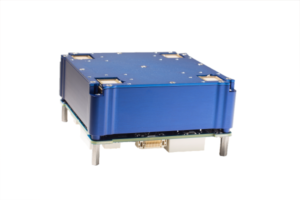When the pandemic struck in 2020, many businesses came to a grinding halt, and people stayed at home during long stretches of lockdowns. But the logistics industry saw some frenzied activity as consumer retail went online almost overnight, online shopping peaked, and consumers opted for doorstep delivery for the sake of safety and convenience.
Put simply, when the world paused, businesses, especially digital-first, direct-to-consumer (D2C) brands, turned to new-age logistics enablers like Pickrr, Ecom Express, Shipway and more and depended on their efficiency and tech adoption not only to survive but to thrive.
Take the case of Vooki, a Chennai-based firm making sanitisers and disinfectants. Before 2020, it used to clock a modest revenue, and monthly shipments were around 60. But the demand for cleaning agents went through the roof during the Corona crisis, and on-time delivery became highly challenging.
To cope with the supply issues and ensure high-speed order fulfilment, Vooki partnered with the logistics provider startup Pickrr. As a result of the collaboration, the Chennai-based company saw a 7% dip in logistics cost, while its delivery turnaround time (TAT) improved by 20%. Better still, with a streamlined fulfilment process in place, it also saw its monthly order volume peak to more than 5,000, an 8,233% increase from its pre-pandemic days.
Vooki has set a trend of sorts in a pandemic-hit world where businesses are opting for new measures to add value to their services and logistics enablers are doing effective handholding to cater to digital-first brands.
Among the tech-driven 3PL companies, Gurugram-based Pickrr extensively uses big data, AI and ML-powered solutions to bring speed and accuracy in delivery fulfilment. It offers businesses a dashboard loaded with a recommendation engine that lists the fastest and most cost-effective delivery partners to enable best-in-class supply chain operations. The company has also devised tech solutions for warehouse management to ensure 24-48 hrs delivery TAT similar to Amazon and Flipkart’s premium deliveries.
“The ecommerce logistics industry has been experiencing a digital overhaul over the last decade, and the pandemic has only accelerated this process. In the past 18 months, the ecommerce industry has seen fast-paced adoption of advanced tech interventions such as AI, ML and data analytics in the logistics department,” says Gaurav Mangla, cofounder and CEO, Pickrr.
Inside Pickrr’s World Of Tech
A Multitasking Recommendation Engine
Set up by Gaurav Mangla (CEO), Rhitiman Majumdar (CMO) and Ankit Kaushik (COO) in 2015, Pickrr always aspired to become a tech-first company to make processes quicker and deliver more intelligent decisions by harnessing the power of data. But in its early days, the startup lacked enough data to build a robust system that could accurately make such recommendations based on the predictive analyses of most important delivery management variables such as region-wise performance of a courier partner, the time taken to pick up a consignment, total transit time and more.
To find a solution, the team manually recorded measurable performances of shipping partners under various metrics and curated the data to find the best possible options. This was the starting point to custom-build a recommendation engine for Pickrr.
After accumulating a sizable database, it took into account the most relevant logistics parameters (identified during data gathering) to create AI models that eventually led to the current version of the recommendation engine. But the team did not stop there. The recommendation engine is consistently improved to provide faster and more accurate results than the previous iteration.
Pickrr’s recommendation engine is now integrated with its courier partners’ systems, and it dynamically collects real-time data across 50+ parameters to analyse and identify the best delivery solutions.
Besides, the company can extract crucial business insights and act upon them. For instance, it tracks end-customer data as this helps businesses identify pin codes with high RTOs (return to origin) so that they can take appropriate measures. Pickrr says RTOs can be reduced by 3-4% in this way, a significant business improvement as there are too many external factors involved here, right from costs of reverse logistics to sustainability to regulatory challenges.
A Zero-Loss Inventory And Warehouse Management Solution
Be it product spoilage, deadstock or storage costs, businesses tend to lose credibility and cash flow if tech and automation are not leveraged for inventory and warehouse management. As a second’s delay can make a big difference (today, some businesses even tell customers that a 10-minute delivery is their USP), this is an area most logistics players want to optimise to improve their efficiency. Pickrr has also leveraged its knowledge of AI and ML to improve these processes.
“The need for ML-powered inventory allocation has seen an uptick as it can accurately forecast customer demand by analysing inventory performance across locations, sales channels and marketplaces, thus helping brands plan their inventory accordingly,” says Mangla.
After onboarding a business, Pickrr’s main platform helps it identify regions with high and low order volumes and allocate the inventories accordingly. Further, it constantly monitors order density and outflow pace and shares insight for better inventory management.
At present, the 3PL company has 10 operational fulfillment centres in Gurugram, Mumbai, Bengaluru, Kolkata, Ghaziabad, Guwahati, Hyderabad and more. And for each warehouse, the company has an algorithm-based load analysis system in place that figures out the optimum way of sending a shipment based on its shape, size, weight, packaging type and other parameters. Pickrr claims to deliver 3 Mn shipments per month and the average time frame is one/two days, matching the speed of the country’s fastest delivery operations.
Building Trust Through Consignment Tracking, Last-Mile Delivery
Improving customer experience in this space is always tricky as there are too many factors that logistics companies cannot change, but they tend to impact both sellers and buyers. The only way to build trust here is through efficient consignment tracking and a speedy last-mile delivery. However, this remains the area of highest inefficiencies due to a lack of tracking and delivery visibility.
Pickrr has stepped in to do away with these operational inadequacies. To begin with, the company offers real-time consignment tracking during transit. These real-time updates have also helped businesses make instant corrective decisions in case of any disruption in the fulfilment process. Moreover, every local courier partner with whom Pickrr works has been given a well-established standard operating procedure to ensure that sellers get a unified and pre-negotiated level of service.
There was an interesting case during the 2020 lockdowns when the main road to Guwahati and nearby areas were declared containment zones. Pickrr’s system displayed a high rate of RTOs as pan-India courier partners taking land routes were unable to deliver the shipments. But it also showed that local courier services were functioning within the city. Powered by this real-time information, Pickrr took immediate action and flew the shipments to Guwahati, following which local courier partners delivered them on time.
“More often than not, regional courier partners perform better in specific areas, and they should have a decent order volume to prove their potential. Although sellers put too much emphasis on well-known courier brands to have a sense of security, we (thanks to our relationships with the sellers) have gone out of our way to divert some shipments to regional players so that there is enough data feed in the system. That way, they also come up in the recommendations along with larger courier brands,” says Mangla.
To improve last-mile visibility, Pickrr’s delivery partners keep updating the status of the consignment enabling 99.9% real time updates on its portals. Using this data, the company notifies the seller and customers whenever the delivery person reaches the same pin code for delivery.
Additionally, customers can also update their satisfaction level through a feedback link post the delivery, and the data is used to track the performance of last-mile courier partners.
The Road Ahead: Tier 2 And Tier 3 Expansion Holds The Key
The 3PL company raised $12 Mn in Series B in August this year and said it would utilise the funds for tech advancement, talent acquisition and expanding its fulfillment centres. Pickrr told Inc42 it was in the process to launch six more fulfillment centres to support the D2C brands reach their customers at the earliest in Hyderabad, Indore, Surat, Lucknow, Chennai and Jaipur by the end of the year.
The logistics enabler will also extend its services to small and medium businesses in Tier 2 and Tier 3 cities. In June this year, it partnered with WhatsApp-based ecommerce platform Bikayi and started a joint campaign to bring SMEs to the digital front, sell through Bikayi’s platform and deliver orders pan-India through Pickrr.
As part of its pan-India expansion drive, the 3PL company has made its platform available in 10 regional languages for hassle-free operations. Additionally, it has a team of account managers who constantly stay in touch with businesses for handholding and problem-solving.
Pickrr claims to be working with more than 75K sellers and delivers 3 Mn shipments per month. The startup clocked 3X growth during the festive season compared to the previous year, it claimed. It also witnessed a 400% growth in shipping volume in the current calendar year.
India’s third-party logistics market was valued at $215 Bn in 2020 and is expected to grow at a CAGR of 10.5% to reach $354 Bn by 2025, a report by CARE Ratings says. Also, long-term growth prospects for established players and new entrants are likely to remain high as organised players account for just 15% of the market.
However, existing players in the 3PL space must solve a couple of crucial challenges, including late delivery and non-delivery, before bringing more businesses under their ambit and helping them sell at the pan-India level. After all, one of the biggest challenges sellers face today is having their inventories stuck in shipping cycles during peak seasons. Another major issue is reverse logistics stemming from RTOs, where sellers have to pay double freight charges to get their shipments back.
Not many solutions are in sight to deal with these challenges just now. But tech-driven predictive analyses, shipment tracking and storage handling solutions provided by the likes of Pickrr are helping remove the operational roadblocks to some extent. With the rise of the D2C brands and the sweeping ecommerce wave in India, it will be interesting to note how logistics companies try and solve these issues for businesses and ensure sustainable growth for all stakeholders.










![Read more about the article [Funding alert] Bitcoin rewards startup GoSats raises $700k in seed round](https://blog.digitalsevaa.com/wp-content/uploads/2021/08/Imagenmmr-1628047811748-300x150.jpg)